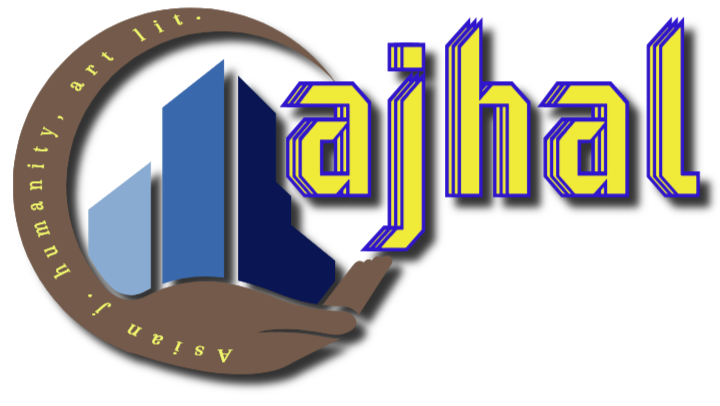Blockchain as a Type of Distributed Ledger Technology
DOI:
https://doi.org/10.18034/ajhal.v3i2.528Keywords:
Blockchain, DTL, CryptographyAbstract
Distributed ledger technology (DLT) that stores data (usually immutable and sequenced transaction records) in a decentralized way through cryptography and consensus algorithms. The first widely recognized implementation of the blockchain took place in 2009 on the Bitcoin public blockchain. Since then, other types of blockchain have been developed for a wide range of applications and features built on common principles such as decentralization, encryption, consensus, and immutability. In particular, blockchain technology is most widely used in transaction settlement and digital currency banks and the financial sector, as well as in supply chain applications that help participants solve problems quickly and efficiently. Other use cases continue to be developed. As a form of information management, blockchain and related DLTs offer advantages over traditional databases and may help develop certain new technologies such as the Internet of Things. Blockchain regulation is currently restricted at the international and federal levels, but state-level legislation provides support and awareness of aspects of blockchain technology. Most of the current regulations are in the form of self-regulation by blockchain developers and related communities, but many challenges and risks such as data privacy and security need to be addressed in the near future.
Downloads
References
Ahram, Tareq, etc. "Blockchain Technology Innovation." Technology & Engineering Management Conference (TEMSCON), 2017 IEEE. IEEE, 2017. DOI: https://doi.org/10.1109/TEMSCON.2017.7998367
Ammous, Saifedean. "Blockchain Technology: What Does It Use for?" (2016). DOI: https://doi.org/10.2139/ssrn.2832751
Atzori, Marcella. "Blockchain Technology and Decentralized Governance: Is a State Still Needed?" (2015). DOI: https://doi.org/10.2139/ssrn.2709713
Condos, James, William H. Sorel, Susan L. Dnegan. "Blockchain Technology: Opportunities and Risks," Vermont, January 15, 2016.
Crossy, M., Pattanayak, P., Verma, S. , And Kalyanaraman, V. (2016). Blockchain Tech-Nology: Beyond Bitcoin. Applied Innova-Tion,
Defilippi, Primavera, Samel Hassan. "Blockchain technology as a regulatory technology: from code to code." ArXiv Preprint arXiv: 1801.02507 (2018).
Donepudi, P. K. (2014a). Technology Growth in Shipping Industry: An Overview. American Journal of Trade and Policy, 1(3), 137-142. https://doi.org/10.18034/ajtp.v1i3.503 DOI: https://doi.org/10.18034/ajtp.v1i3.503
Donepudi, P. K. (2014b). Voice Search Technology: An Overview. Engineering International, 2(2), 91-102. https://doi.org/10.18034/ei.v2i2.502 DOI: https://doi.org/10.18034/ei.v2i2.502
Donepudi, P. K. (2015). Crossing Point of Artificial Intelligence in Cybersecurity. American Journal of Trade and Policy, 2(3), 121-128. https://doi.org/10.18034/ajtp.v2i3.493 DOI: https://doi.org/10.18034/ajtp.v2i3.493
Kashan, Christian. "Hyper Leisure Blockchain Fabric Architecture". Workshop on decentralized cryptocurrencies and consensus ledgers. Volume 310.2016.
Marinova, Katya, Andrea Spark. "Market design using blockchain technology". (2017). DOI: https://doi.org/10.2139/ssrn.2785626
Nguyen, Quoc Khan. "Blockchain-Financial Technology for Sustainable Development in the Future." Green Technology and Sustainable Development (GTSD), International Conference. IEEE, 2016. DOI: https://doi.org/10.1109/GTSD.2016.22
Nofer, Michael, etc. "Blockchain" Business & Information Systems Engineering 59.3 (2017): 183-187 DOI: https://doi.org/10.1007/s12599-017-0467-3
Pilkington, Mark. "11 Blockchain Technol-Ogy: Principles and Applications". Re-searching the Handbook on Digital Conversion-Mations (2016)
Pilkington, Mark. "Blockchain Technology: Principles and Applications. Handbook of Research on Digital Conversion, f. Edited by Xavierolleros and majlindazhegu" (2016).
Zheng, Zibin, etc. "Overview of Blockchain Technology: Architecture, Consensus, and Future Trends" Bigdata Congress, 2017 Ieee International Congress On. Ieee, 2017 DOI: https://doi.org/10.1109/BigDataCongress.2017.85
--0--















